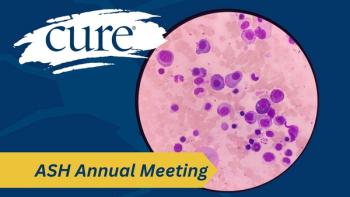
Increased Drug Dosage Could Improve Survival in Myeloma
Patients with myeloma who took higher doses of Kyprolis plus dexamethasone tended to have better survival outcomes, according to a recent study.
Patients with multiple myeloma could see additional survival benefit when adjusting their dosage of Kyprolis (carfilzomib) plus dexamethasone (a regimen referred to as “Kd”), according to recent research presented at the 2018 American Society of Hematology (ASH) Annual Meeting in San Diego.
“The objective of this research was to study the impact of carfilzomib, or Kd dosing in the real world, on two very important clinically relevant endpoints: overall survival and time to next treatment,” said study author Sumeet Panjabi, Ph.D., of Amgen.
The researchers examined the electronic medical records of more than 1,400 adults who were diagnosed with myeloma between January 2010 and October 2017; received a Kd regimen in any line of therapy; and had three or more doses of Kyprolis after their first administration of Kyprolis in the Kd regimen. Then, the cumulative weekly dose was calculated by the total of the weekly dose of Kyprolis divided by the number of weeks of the Kd treatment.
Two groups were prepared in the study — those who were given a cumulative weekly dose of 120 mg or more of Kd and those given less than 120 mg.
“So just recently in October, the (Food and Drug Administration; FDA) approved carfilzomib or Kd 70 mg weekly on the basis of the ARROW trial. The ARROW trial demonstrated the superiority of the 17 weekly Kd doses relative to the legacy dose, 27 mg per meters squared, twice weekly,” Panjabi said. “We call this the legacy dose because this was the first carfilzomib dose that had been approved way back in 2012. Also, in 2016, the FDA approved carfilzomib 56 mg per meters squared twice weekly on the basis of the ENDEAVOR trial, which demonstrated superiority of Kd over Velcade plus dexamethasone.”
Twelve-month overall survival for the higher dose group was significantly longer than in the lower dose group — 90.3 percent of patients versus 79.7 percent, respectively.
“Essentially, the takeaway here is that a higher treatment dose was associated with a higher probability of survival,” Panjabi said.
When it came to the time to the next treatment, the higher dose also bested the lower dose, with patients being able to wait longer periods between treatments. The average time to next treatment was 17.5 months in the higher dose group, and 13.2 months in the lower group. Further, about a third (32 percent) of patients given a higher dose experienced treatment progression after 12 months, compared to 44.8 percent in the lower dose group.
“This has the same takeaway as the survival results,” Panjabi said. “Higher treatment dose was associated with lower probability of progression to the next treatment.”
However, this study did have some limitations, warranting future investigation comparing the two dosing strategies. For example, the lower treatment dose group made up the majority of the sample (1,340 patients; 91.2 percent). This is because, as Panjabi mentioned, the higher dosage was not granted approval by the FDA until 2016, which was more than halfway through the study period.
Also, while survival benefit was greater in the higher dose group, patients and their physicians must also consider the possibility of increased side effects, such as peripheral neuropathy, before upping their dose.





